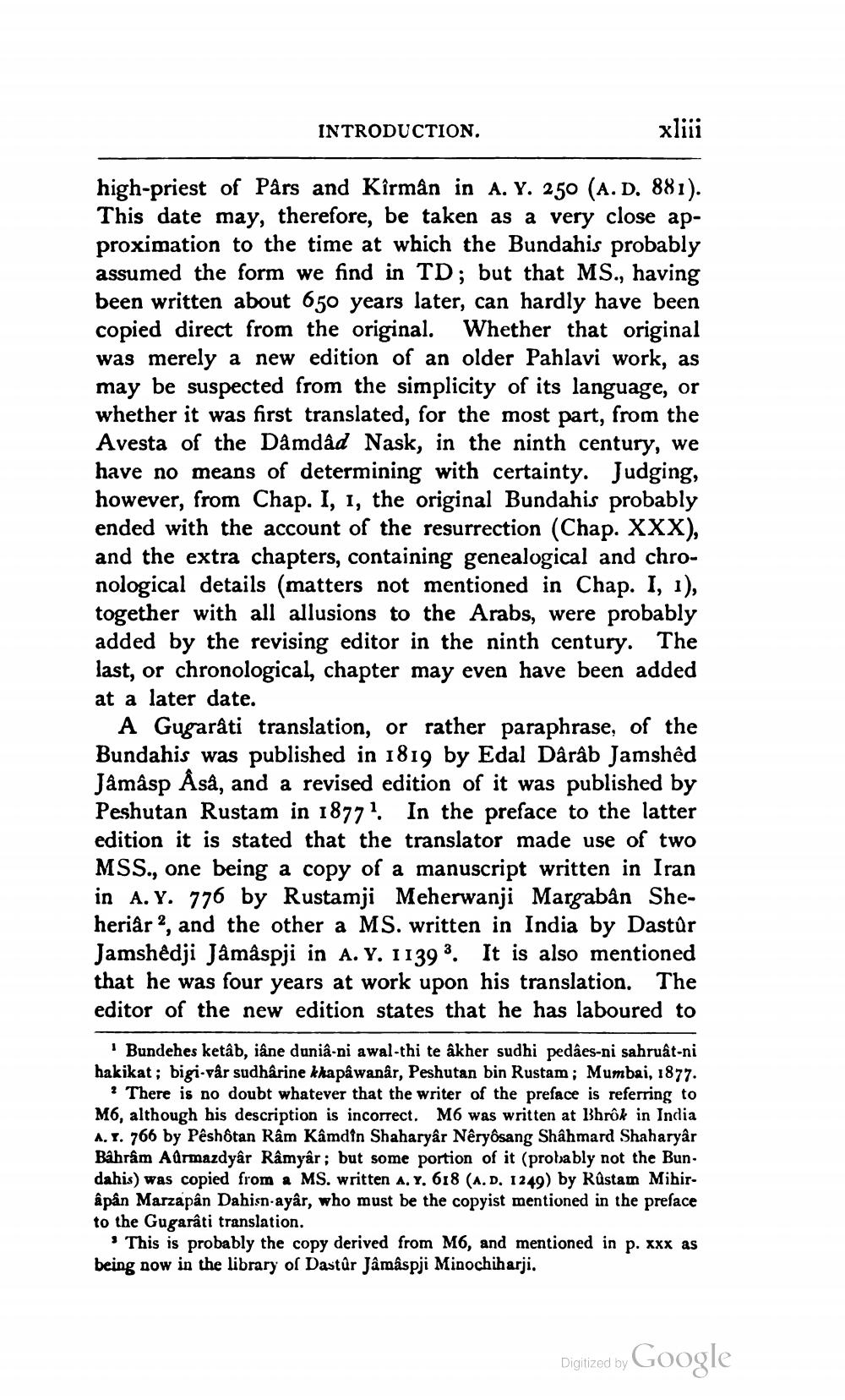________________
INTRODUCTION.
xliii
high-priest of Pars and Kirmân in A. Y. 250 (A. D. 881). This date may, therefore, be taken as a very close approximation to the time at which the Bundahis probably assumed the form we find in TD; but that MS., having been written about 650 years later, can hardly have been copied direct from the original. Whether that original was merely a new edition of an older Pahlavi work, as may be suspected from the simplicity of its language, or whether it was first translated, for the most part, from the Avesta of the Damdâd Nask, in the ninth century, we have no means of determining with certainty. Judging, however, from Chap. I, 1, the original Bundahis probably ended with the account of the resurrection (Chap. XXX), and the extra chapters, containing genealogical and chronological details (matters not mentioned in Chap. I, 1), together with all allusions to the Arabs, were probably added by the revising editor in the ninth century. The last, or chronological, chapter may even have been added at a later date.
A Gugaráti translation, or rather paraphrase, of the Bundahis was published in 1819 by Edal Dârâb Jamshed Jamâsp Åså, and a revised edition of it was published by Peshutan Rustam in 18771. In the preface to the latter edition it is stated that the translator made use of two MSS., one being a copy of a manuscript written in Iran in A. Y. 776 by Rustamji Meherwanji Margaban Sheheriår, and the other a MS. written in India by Dastûr Jamshedji Jåmåspji in A. Y. 11393. It is also mentioned that he was four years at work upon his translation. The editor of the new edition states that he has laboured to
"Bundehes ketâb, iâne duniâ-ni awal-thi te akher sudhi pedâes-ni sahruât-ni hakikat; bigi-vår sudhârine khapâwanâr, Peshutan bin Rustam; Mumbai, 1877.
? There is no doubt whatever that the writer of the preface is referring to M6, although his description is incorrect. M6 was written at Bhrôk in India A.1. 766 by Peshốtan Râm Kamdfn Shaharyar Neryêsang Shahmard Shaharyar Bahram Adrmazdyâr Râmyâr; but some portion of it (probably not the Bun. dahis) was copied from a MS. written A. Y. 618 (A.D. 1249) by Růstam Mihirâpân Marzapan Dahisn-ayâr, who must be the copyist mentioned in the preface to the Gugarâti translation.
This is probably the copy derived from M6, and mentioned in p. xxx as being now in the library of Dastûr Jâmâspji Minochiharji.
Digitized by
Digitized by Google




